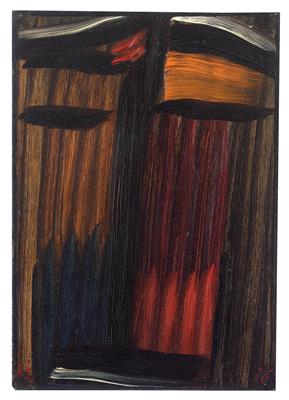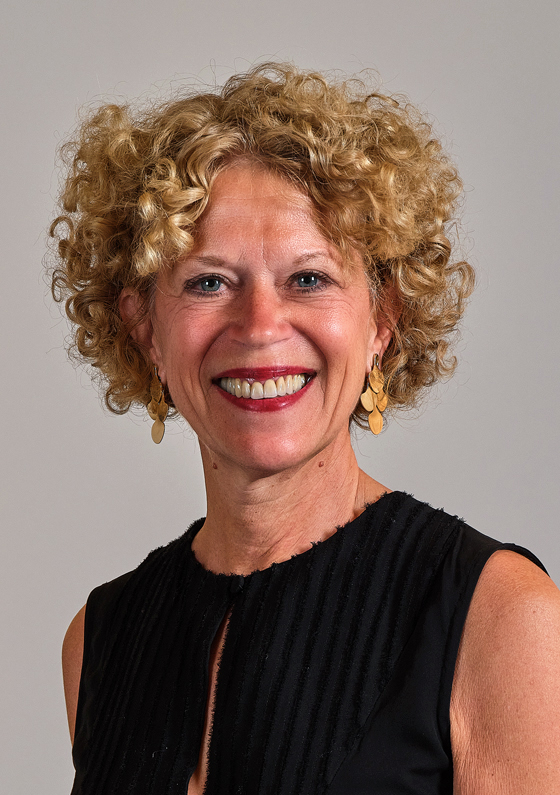Alexej Jawlensky

(Torschok 1864–1941 Wiesbaden)
Large Meditation, monogrammed lower left, dated lower right AJ 36, oil on linen-finish paper laid down on cardboard, 25 x 17.5 cm, verso dated and inscribed, A. Jawlensky 1936 N 31, framed, (PS)
Provenance:
Kornfeld and Klipstein auction, Berne, 9 June 1961
Gradska Galerija, Zagreb
Beniamino Levi, Milan Agenzia d’Arte Moderna, Rome
Christie‘s London 7.2.2006, lot 319 -
acquired from this sale by the present owner
Literature:
M. Jawlensky, L. Pieroni-Jawlensky and A. Jawlensky, Alexej von Jawlensky, Catalogue Raisonné of the Oil Paintings, vol. III,1934–1937, London, 1993, p. 253, no. 1965 (illustrated p. 252)
Jawlensky discovered his interest in the human face early on, devoting himself to it in the series, ‘Mystical Heads’. The paintings, ‘Faces of the Saviour’ and ‘Abstract Heads’ followed, which, in their evident reduction and increasing eschewing of individual features, can be seen as anticipating his later ‘Meditations’.(1) As with all the ‘Meditations’, this picture, too, has a structural form at its base that is simultaneously reminiscent of both a cross and a face and combines fundamental themes of the artist’s entire oeuvre. In a letter to Father Verkade, Jawlensky writes about the new heads and the change in his art, “I painted these variants for several years, and then it became necessary for me to find a form for the face, since I had finally realised that great art ought only to be painted with religious feeling. And that was something I could bring only to the human face. I realised that the artist must express in his art, by means of forms and colours, the divine within himself. That is why the work of art is a visible God, and why art is a ‘longing for God’. I painted ‘faces’ for many years. I sat in my studio and painted, and I did not need nature to prompt me. It was enough for me to immerse myself in myself, to pray and prepare my soul to attain a religious state...’(2)
The period of the ‘Meditations’, his small-format panels, represents the conclusion of his oeuvre. Progressing arthritis increasingly limited the artist. In a letter to Father Verkade about the period in which he executed his ‘Meditations’, Jawlensky wrote, “So the years passed and I worked a great deal. And then I became ill and although I could still work, despite the fact that my hands became more and more rigid. I could no longer pick up the paintbrush and had to use both hands to do so, always with a great deal of pain. The format of my works became very small, and I also had to find a new technique. For three years I painted these small heads like a man possessed. Then I realised that I would soon have to stop working entirely: and that’s what happened, too!”(3) Working in a small format with long, continuous brushstrokes on drawing paper or cardboard, Jawlensky developed a new pictorial language, until he became completely paralysed in 1938. Thus, the variant forms of the ‘Meditations’ cannot be deemed exclusively the result of a physical illness. Instead, they represent the possibility that presented itself to the artist to continue to make, and vary, artistic statements, despite suffering difficult circumstances.
(1)Cf. Katharina Cichosch, Schirn Magazin, Frankfurt 2013
(2)Jawlensky as cited in Schultze, Alex Alexej Jawlensky, Cologne 1970, p. 39 f.
(3)Ibid., p. 54
Specialist: Dr. Petra Maria Schäpers
 Dr. Petra Maria Schäpers
Dr. Petra Maria Schäpers
petra.schaepers@dorotheum.de
25.11.2014 - 18:00
- Realized price: **
-
EUR 112,985.-
- Estimate:
-
EUR 40,000.- to EUR 50,000.-
Alexej Jawlensky
(Torschok 1864–1941 Wiesbaden)
Large Meditation, monogrammed lower left, dated lower right AJ 36, oil on linen-finish paper laid down on cardboard, 25 x 17.5 cm, verso dated and inscribed, A. Jawlensky 1936 N 31, framed, (PS)
Provenance:
Kornfeld and Klipstein auction, Berne, 9 June 1961
Gradska Galerija, Zagreb
Beniamino Levi, Milan Agenzia d’Arte Moderna, Rome
Christie‘s London 7.2.2006, lot 319 -
acquired from this sale by the present owner
Literature:
M. Jawlensky, L. Pieroni-Jawlensky and A. Jawlensky, Alexej von Jawlensky, Catalogue Raisonné of the Oil Paintings, vol. III,1934–1937, London, 1993, p. 253, no. 1965 (illustrated p. 252)
Jawlensky discovered his interest in the human face early on, devoting himself to it in the series, ‘Mystical Heads’. The paintings, ‘Faces of the Saviour’ and ‘Abstract Heads’ followed, which, in their evident reduction and increasing eschewing of individual features, can be seen as anticipating his later ‘Meditations’.(1) As with all the ‘Meditations’, this picture, too, has a structural form at its base that is simultaneously reminiscent of both a cross and a face and combines fundamental themes of the artist’s entire oeuvre. In a letter to Father Verkade, Jawlensky writes about the new heads and the change in his art, “I painted these variants for several years, and then it became necessary for me to find a form for the face, since I had finally realised that great art ought only to be painted with religious feeling. And that was something I could bring only to the human face. I realised that the artist must express in his art, by means of forms and colours, the divine within himself. That is why the work of art is a visible God, and why art is a ‘longing for God’. I painted ‘faces’ for many years. I sat in my studio and painted, and I did not need nature to prompt me. It was enough for me to immerse myself in myself, to pray and prepare my soul to attain a religious state...’(2)
The period of the ‘Meditations’, his small-format panels, represents the conclusion of his oeuvre. Progressing arthritis increasingly limited the artist. In a letter to Father Verkade about the period in which he executed his ‘Meditations’, Jawlensky wrote, “So the years passed and I worked a great deal. And then I became ill and although I could still work, despite the fact that my hands became more and more rigid. I could no longer pick up the paintbrush and had to use both hands to do so, always with a great deal of pain. The format of my works became very small, and I also had to find a new technique. For three years I painted these small heads like a man possessed. Then I realised that I would soon have to stop working entirely: and that’s what happened, too!”(3) Working in a small format with long, continuous brushstrokes on drawing paper or cardboard, Jawlensky developed a new pictorial language, until he became completely paralysed in 1938. Thus, the variant forms of the ‘Meditations’ cannot be deemed exclusively the result of a physical illness. Instead, they represent the possibility that presented itself to the artist to continue to make, and vary, artistic statements, despite suffering difficult circumstances.
(1)Cf. Katharina Cichosch, Schirn Magazin, Frankfurt 2013
(2)Jawlensky as cited in Schultze, Alex Alexej Jawlensky, Cologne 1970, p. 39 f.
(3)Ibid., p. 54
Specialist: Dr. Petra Maria Schäpers
 Dr. Petra Maria Schäpers
Dr. Petra Maria Schäpers
petra.schaepers@dorotheum.de
|
Buyers hotline
Mon.-Fri.: 10.00am - 5.00pm
kundendienst@dorotheum.at +43 1 515 60 200 |
| Auction: | Modern Art |
| Auction type: | Saleroom auction |
| Date: | 25.11.2014 - 18:00 |
| Location: | Vienna | Palais Dorotheum |
| Exhibition: | 15.11. - 25.11.2014 |
** Purchase price incl. charges and taxes(Country of delivery: Austria)
It is not possible to turn in online buying orders anymore. The auction is in preparation or has been executed already.
